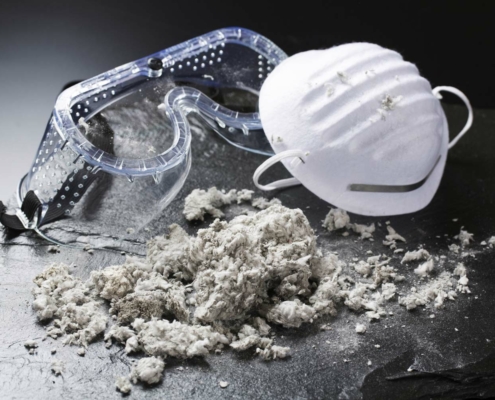National Emission Standards for Hazardous Air Pollutants (NESHAP) are stationary source standards for hazardous air pollutants. Hazardous air pollutants (HAPs) are those pollutants that are known or suspected to cause cancer or other serious health effects, such as reproductive effects or birth defects, or adverse environmental effects.
EPA’s air toxics regulation for asbestos is intended to minimize the release of asbestos fibers during activities involving the handling of asbestos.
Air toxics regulations under the Clean Air Act specify work practices for asbestos to be followed during demolitions and renovations of all facilities, including, but not limited to, structures, installations, and buildings (excluding residential buildings that have four or fewer dwelling units). The regulations require a thorough inspection where the demolition or renovation operation will occur. When buildings are under renovation, they are not being demolished, but asbestos-containing building material is being removed or disturbed. Performing the work in accordance with the Asbestos NESHAP helps to ensure that areas in use during the renovation are not contaminated and that the area under renovation, when it is complete, is also free of contamination.
Three of the major health effects associated with asbestos exposure are:
- lung cancer
- mesothelioma, a rare form of cancer that is found in the thin lining of the lung, chest and the abdomen and heart
- asbestosis, a serious progressive, long-term, non-cancer disease of the lungs
Exposure to asbestos increases your risk of developing lung disease. That risk is made worse by smoking. In general, the greater the exposure to asbestos, the greater the chance of developing harmful health effects.
Disease symptoms may take many years to develop following exposure.
Asbestos-related conditions can be difficult to identify. Healthcare providers usually identify the possibility of asbestos exposure and related health conditions like lung disease by taking a thorough medical history. This includes looking at the person’s medical, work, cultural and environmental history.
After a doctor suspects an asbestos-related health condition, he or she can use a number of tools to help make the actual diagnosis. Some of these tools are physical examination, chest x-ray and pulmonary function tests. Your doctor may also refer you to a specialist who treats diseases caused by asbestos.




